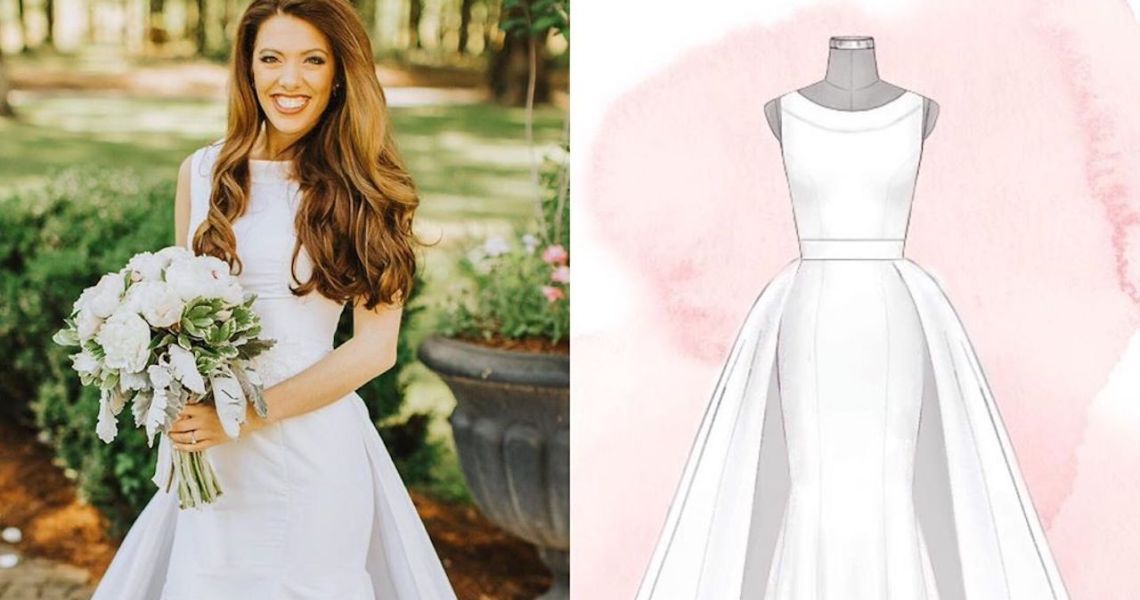The wedding dress shopping experience is broken.
That realization is what motivated Leslie Voorhees Means to launch direct-to-consumer wedding dress company Anomalie. On Tuesday, the company is launching a new dress design tool for brides to make wedding dress shopping simpler, and achievable online.
As mass companies like David’s Bridal (which once claimed to outfit one out of every three American brides and now makes up 25% of the gown market) are slowly trying to adapt to a modern bride’s needs, more digitally native bridal gown companies are flooding the market. In 2017, the U.S. wedding dress industry reached $2.86 billion in sales, and it’s projected to be worth $3.23 billion by 2021, according to Statista. Floravere opened in 2016 (and opened its first retail space this summer), while Azazie has been around since 2014.
“Boutiques just can’t carry the inventory that we are able to provide in this digital experience. We have customization technology to provide [dresses] for any design, shape, size and budget. This is not the typical digital experience, especially for a typical DTC company. We are not a Shopify website,” said Voorhess Means.
In the last three years Anomalie has raised $18.1 million in funding from Lerer Hippeau, Maveron and Goodwater Capital. It used a portion of that to invest in the new DressBuilder tool. Brides take an online quiz and within minutes of finishing, they’re sent a personalized, illustrated sketch of their dress. The company’s technology is able to pull together pre-sketched elements of the final dresses and fit them together into a final picture within minutes.
From there, the bride works with a stylist via phone at Anomalie to make any tweaks or alternations to that dress. Or she can go back to the drawing board and design a new dress. Final products cost, on average, between $1,000 and $2,000, not including costs for any alterations the bride needs to make. Since the company makes made-to-measure dresses, the idea is that there will be little to no alternations after the bride initially provides her measurements. But in the event they are needed, the company provides customers with a list of local trusted tailors.
This new dress-building tool is part of the DTC company’s play to position itself as a Stitch Fix of bridal gowns, by building out data-powered tech capabilities as the foundation of the company, said Voorhees Means.
Ad position: web_incontent_pos1
Since launching, Voorhees Means has been slowly building a strong team of data scientists and technology experts, including former Sephora vp of digital innovation Marcy Zelmar as chief experience officer. In the last year, Anomalie has hired from Stitch Fix, NatureBox and Uber.
Anomalie has spent over 30,000 hours over the last three years building the DressBuilder tool by adding in 8,000-plus “building blocks” of a bridal gowns to a database, according to Voorhees Means. That includes various necklines, bodice shapes, skirt silhouettes, fabrics, lace details, sleeve lengths and strap widths. With the data points from a quiz, a customer will be served up one of the 4 billion potential dress combinations available through Anomalie’s database. The quiz includes questions about one’s wedding destination, personal style and dress style preferences.
Anomalie doesn’t have storefronts and handles all communication with customers via email or over the phone. Voorhees Means said the company has no plans to move into physical retail, even though the bridal dress shopping experience is one that many brides choose to do in person.
“There are consumers out there looking for really convenient experiences. Today, [shopping for a gown] can be flipping through a digital catalog on an iPad with a girlfriend while sitting on your couch,” said Darin Archer, chief strategy officer at Elastic Path.
Voorhees Means said the company has largely been a place where brides go after hitting up four or five bridal stores and coming up short based on their budget, size or choice style.
Ad position: web_incontent_pos2
The company offers dresses for brides sizes 00 to 30-plus, Voorhees Means said. Dresses are made to measure, and the company doesn’t carry any inventory. The design process typically takes about one month to allow for any changes the bride wants to make, or if the customer wants to receive fabric samples or lace swatches ahead of placing the order. That’s followed by an additional four-plus months to create the dress and ship it to the customer.




